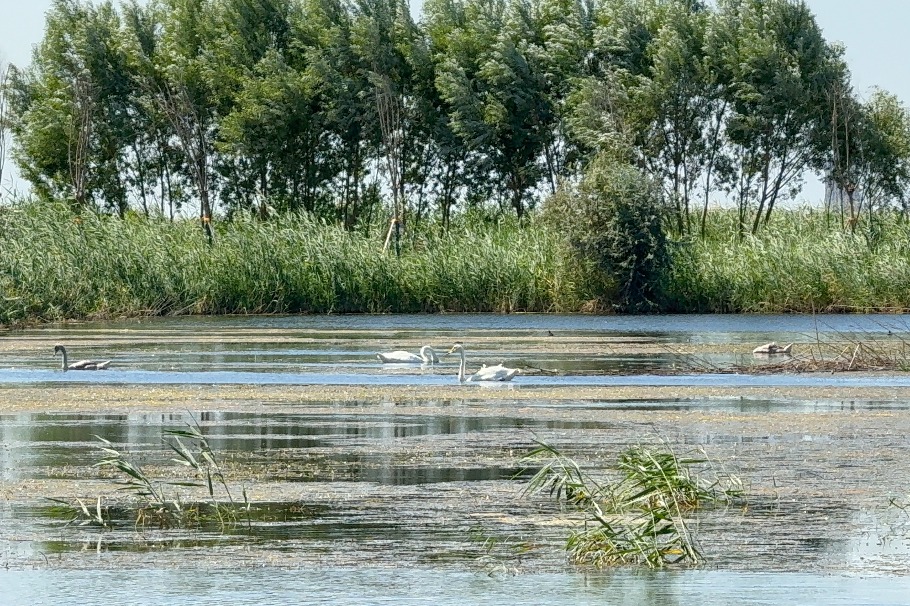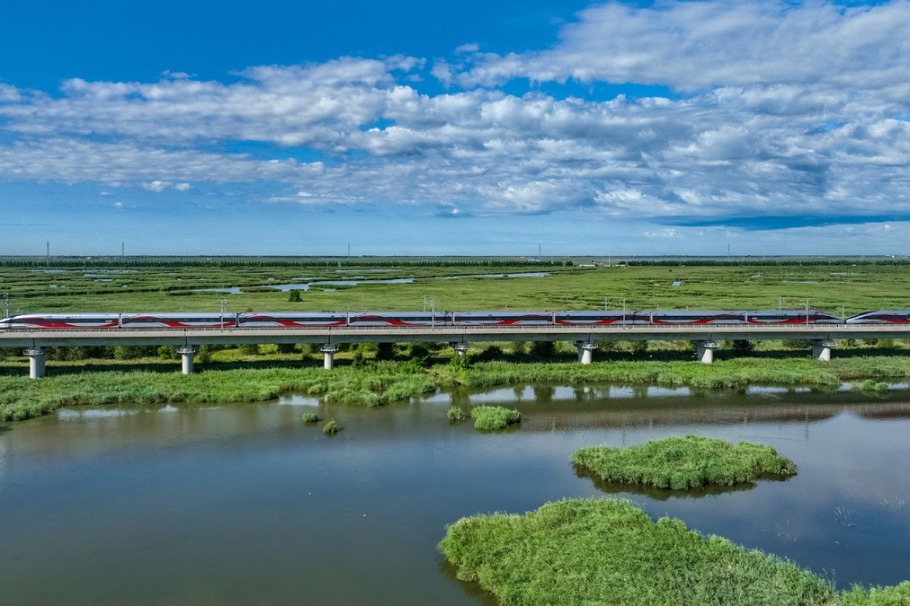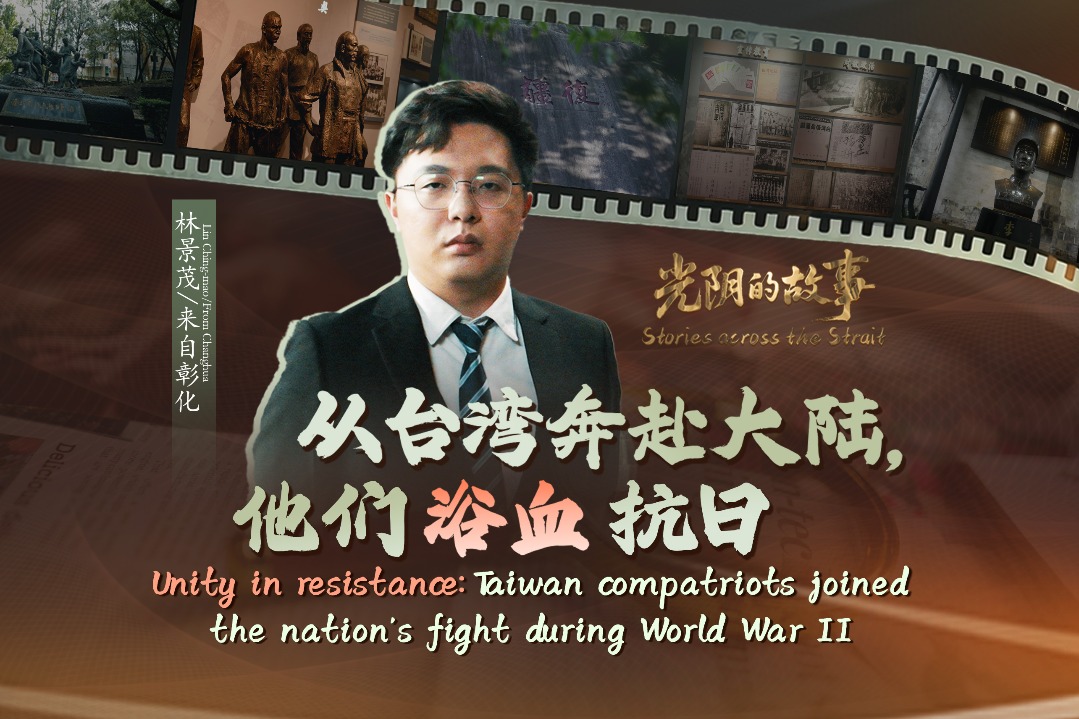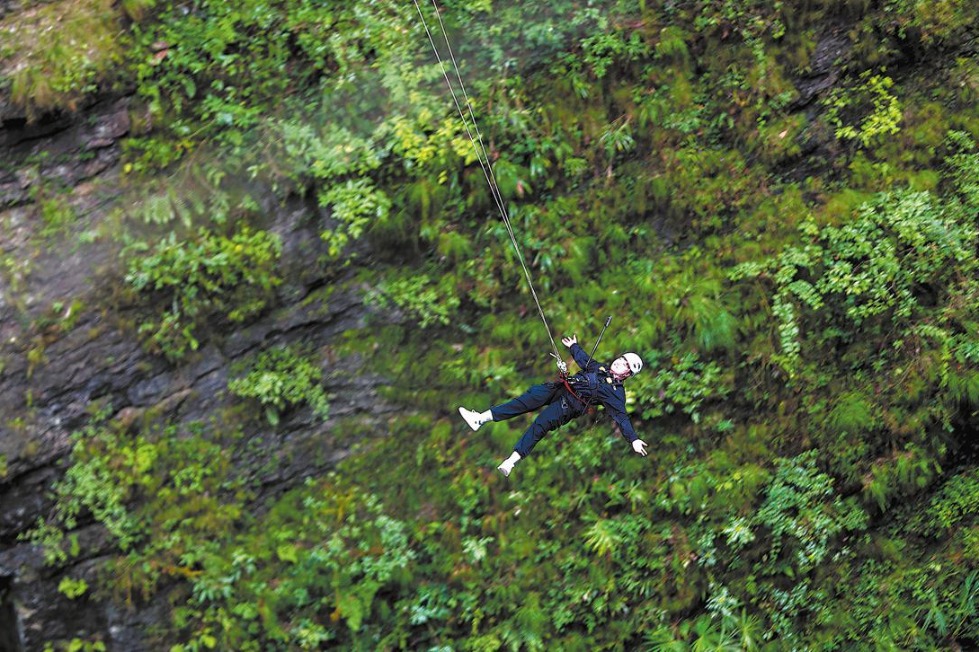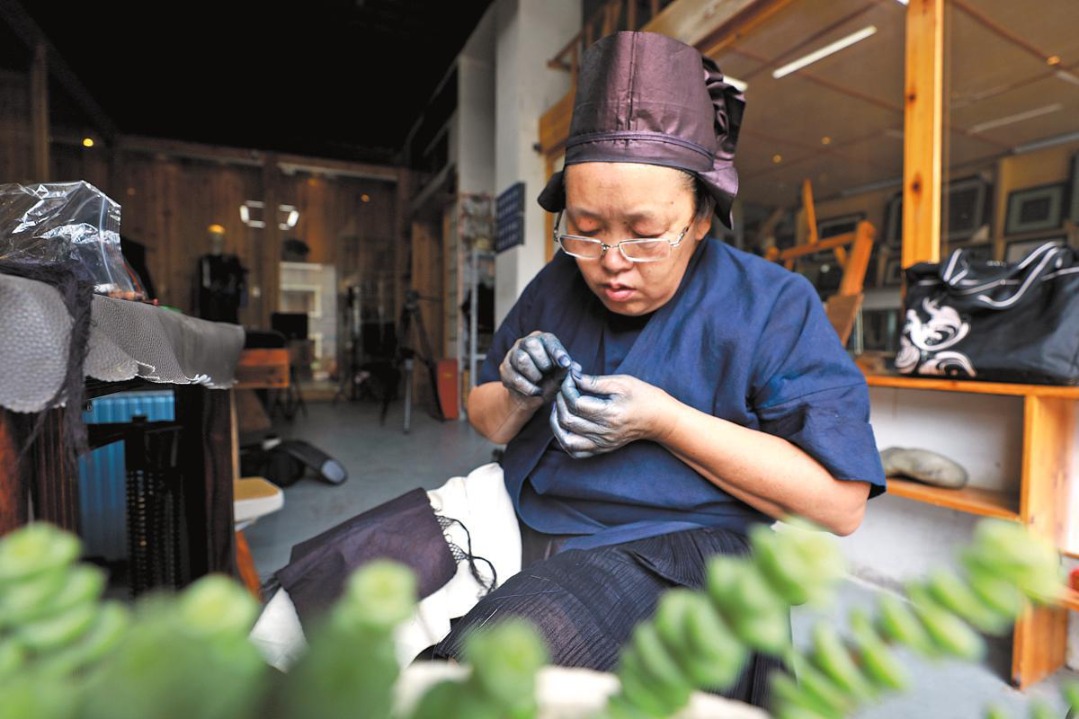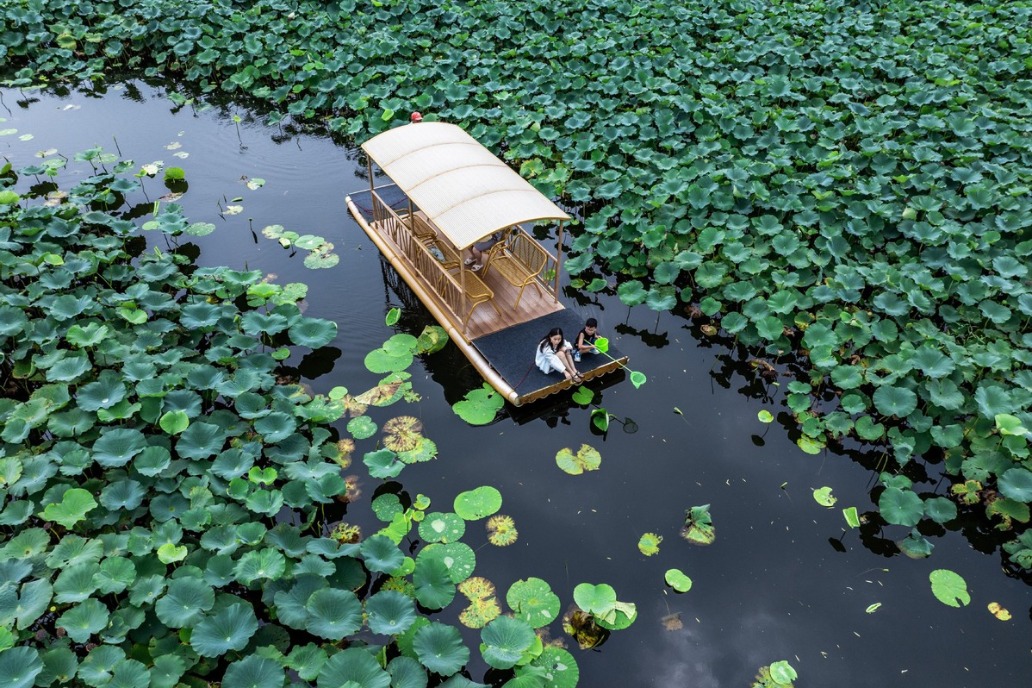Legacy of Tea Horse Road lives on in Yunnan village
Ancient route accelerated commercial and spiritual connection of different ethnic groups

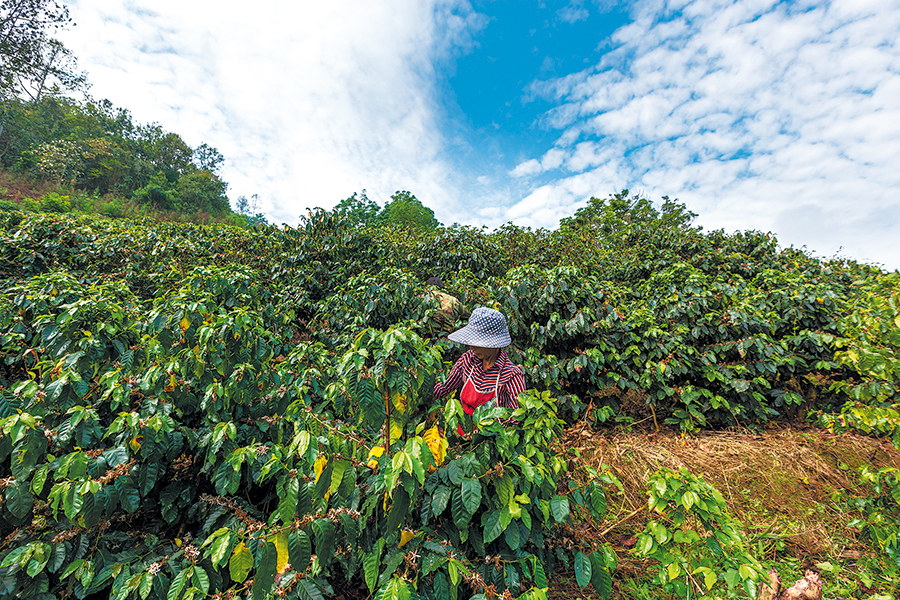
While other scenic places concentrate on showcasing their beauty and vibrancy, the attractiveness of Nakeli village in Pu'er city, Yunnan province, is perhaps best described as "having nothing".
In Nakeli, there is no hustle and bustle of traffic, or check-in spots for social media influencers. It is a place where time seems to pass with a whisper. Yet while it's safe to assume the majority of Yunnan residents have never heard the name, Nakeli is home to a palpable cultural rebirth of the ancient Tea Horse Road.
Located 20 kilometers from Ning'er county, Nakeli was once a bustling town of horse caravans and busy merchants. Today, as one of original production and distribution centers for Pu'er tea, the village proudly preserves a small remnant of the ancient Tea Horse Road, an important trade route that once connected the Central Plains with the southwest and northwest regions of China.
The Tea Horse Road was a narrow, rugged and perilous route on which caravans relied on mules, oxen or manual labor to transport goods for commerce that greatly facilitated exchanges between different ethnic groups. Today, what remains of the road stands as a cultural symbol.
Three main routes
The ancient Tea Horse Road served the primary purpose of transporting tea and facilitating the trade of horses, mules, salt, alcohol, sugar, furs and medicinal herbs, as well as spiritual exchanges involving Buddhism, Islam, Christianity and scientific ideas. The three main routes of the Southwest Tea Horse Road — Qinghai-Tibet section, Sichuan-Tibet section and Yunnan-Tibet section — feature intertwining rivers, towering mountains and a patchwork of gorges and basins. The complex geographical environment and biodiversity along the Southwest Tea Horse Road routes benefited around 20 different ethnic groups.
The Qinghai-Tibet Tea Horse Road passes through Longxi Corridor, a region now classified as part of the northwestern region of China. Serving as a crossroads connecting Loess Plateau in the east, Qinghai-Tibet Plateau in the west, the Qilian Mountains in the north and Sichuan Basin in the south, Longxi Corridor has long been a key route for ethnic migrations and commercial trade.
Prior to the Tang Dynasty (618-907), ancient peoples residing in Longxi Corridor opened up commercial trade routes and engaged in mutual exchanges with the Central Plains dynasties, laying the foundation for the formation of the Qinghai-Tibet Tea Horse Road. During the Tang and Song (960-1279) dynasties, regimes predominantly led by Tibetans controlled the Longxi Corridor region and established tea and horse trade relations with the Central Plains dynasties.
During the Ming (1368-1644) and Qing (1644-1911) dynasties, with the Qinghai-Tibet section receding to a secondary position, the Sichuan-Tibet section and Yunnan-Tibet section successively became the main routes on the ancient road. Those routes played a significant role in driving ethnic migration and integration in Southwest China.
According to scholars such as Liu Litang and Chen Tao from Wuhan University, the history of the Southwest Tea Horse Road stretches seamlessly from the early Tang Dynasty to the late Qing Dynasty and the Republic of China era, thanks to the collective efforts of the Han, Tibetan, Mongolian, Manchu, Qiang, Yi, Naxi and other ethnic groups.
United people
Pu'er city is home to 26 ethnic groups, including the Han, Hani, Yi, Lahu, Wa and Dai, among others. It is a microcosm of China's multiethnic socialist family and a grand garden of culture. At Ethnic Unity Park in northwest Ning'er, there is a monument inscribed with a pledge. It is acclaimed as the "First Monument of Ethnic Unity in New China".
In June 1950, to jointly celebrate the first National Day of the People's Republic of China, the central government selected representatives from diverse ethnic groups across the country to form a delegation to visit Beijing. Members of the Yunnan delegation, including Wa ethnic group leader La Meng, were warmly received by the leaders of the Party and the State at that time. Through subsequent visits and studies, the ethnic minority representatives became aware of the strength of New China and received profound education on ethnic equality and unity.
On Dec 27, 1950, at the first fraternal ethnic representative meeting organized by the Ning'er committee of the Communist Party of China, visiting representatives shared their experiences of the National Day celebration. Representative Li Bao suggested using the Wa people's customs of drinking ritual water and sacrificing cattle to symbolize the great unity of the various ethnic groups in the region, and La proposed inscribing "incantations" on a large stone — a suggestion that was unanimously approved.
On Jan 1, 1951, more than 3,000 people participated in the ethnic unity alliance pledge ceremony held at Ning'er Red Square. Following Wa customs for major ceremonies, including drinking chicken blood and sacrificing cattle, 48 representatives of various ethnic groups signed their names in Han, Dai and Lahu scripts on the Monument of Ethnic Unity, pledging as follows:
"We, the representatives of our 26 ethnic groups, on behalf of all our compatriots in the entire Pu'er region, solemnly conducted the sacrificial cattle ritual and drank the ritual water here. From this day on, we are united as one, resolutely united under the leadership of the Communist Party of China and pledge to strive for the construction of an equal, free and happy family! This is our oath!"
The inscription on the Pu'er Monument of Ethnic Unity is recognized as the first of its kind in China. Today in Pu'er, the celebration of multiple ethnic groups in villages, schools and even families is common. They celebrate together, whether it's the Dai people's Water Sprinkling Festival, the Wa people's New Rice Festival or the Lahu people's Calabash Festival.
"In the household registration books, many families are composed of several different ethnic groups and intermarriage between different ethnic groups is very common," said Li Hongfei, a staff member at the Simao branch of the Pu'er public security bureau.
In Pu'er, discussions about ethnic unity are inseparable from the spirit of the pledge monument and the binnongsaihai mutual assistance mechanism. Through long-term practical experiences, Menglian county's Dai, Lahu and Wa communities have formed the binnongsaihai mechanism that is "like relatives without blood ties".
In the past, production methods of the Dai, Lahu and Wa peoples often differed and their busy farming seasons did not always align, but families in binnongsaihai households helped each other voluntarily when one side was busy with farming tasks and the other was idle. When one side faced difficulties, the other would provide financial and material support without hesitation. Under the guidance of the local government, this mechanism remains effective in deepening ethnic unity and progress, supporting poverty alleviation efforts and more.
In terms of culture, Menglian county uses the binnongsaihai mechanism to guide various ethnic groups to learn and use the national common language and script, promoting mutual learning in language and organizing traditional festival celebrations.
The influence of the Pu'er Monument of Ethnic Unity pledge is also seen in the surrounding regions. After the founding of the People's Republic of China, with the construction of modern roads and highways, the ancient Tea Horse Road gradually transformed from narrow, rugged paths into smooth and spacious development avenues.
Construction of the transportation infrastructure created new opportunities for the development of Nakeli, and thanks to the local government's initiatives to benefit the people, the once-impoverished village has established a rural ecological leisure tourism brand featuring the culture of the Tea Horse Road, caravan culture and ethnic customs.
From the relay courier stations along the ancient Tea Horse Road to the entrepreneurial small town, tourists in Nakeli wander like children, finding refuge under the wooden eaves of lofted cabins.
Li Qingyuan, secretary of the CPC Pu'er committee, said in the past, Pu'er was renowned worldwide for its tea. Today, within Pu'er, the ancient Tea Horse Road spans 177 km, with more than 140 segments and some 20 wind-rain bridges that can cover people from the wind and rain. These symbols of Pu'er have historical significance, spiritual value and cultural identities. The city government will promote the spirit of the ancient Tea Horse Road, seize the historic opportunity of the China-Laos Railway and leverage Pu'er's location advantage of "one city connecting three countries". It will also promote rural vitalization and make efforts to increase farmers' income in a bid to enable the people to live better lives.

















